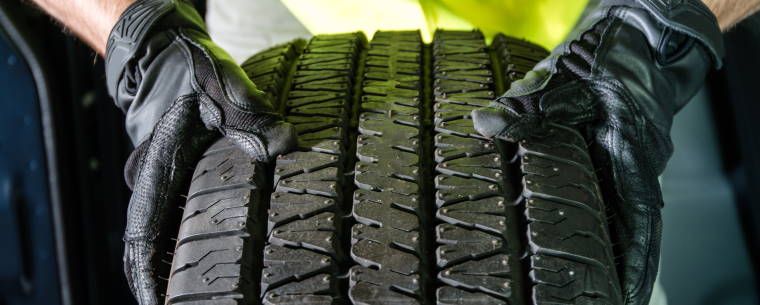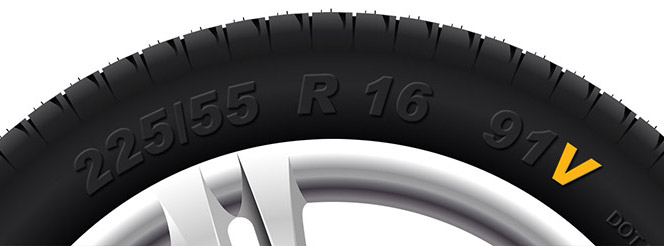3 Things Before You Buy New Tyres
Published on: Friday, 01 May 2020 | Author: Bradley Jando
As one of the most important features of your vehicle, when it comes to purchasing new tyres, it's vital to do your research and know exactly what you're looking for. After all, from a safety point of view, it’s important to remember that your tyres are the only point of contact between your car and the road. Grip, traction, handling, braking and even fuel economy are all aspects of driving that are directly affected by your choice of tyres.
But what exactly should you know before buying new tyres? In this post we look at three essential things all car owners need to know about tyres before purchasing a new set.
1. It’s all about size
First thing’s first - before you fork out for a new set of tyres, you need to have a clear idea of what size of tyre your car requires. Fortunately there are a few easy ways to do this. Firstly, and perhaps most obviously, check your owner's manual. All relevant information regarding the type and dimensions of tyre your vehicle needs should be listed inside.
Alternatively, you can check the size of your current tyres to provide an answer. This is also quick and easy to do. Have you ever noticed all those seemingly random numbers and letters on the sidewall of a tyre? Well, these relate to the specific size and dimensions of the tyre in question, as well as providing other useful information. For example, the code on the tyres of a Mini Cooper might read, P195/55R16 85H. In this example, the ‘195’ indicates the normal width of the tyre in millimetres at the widest point, while ‘55’ tells you that the height of the tyre’s sidewall is 55 per cent of the width (107mm). Finally, the ‘R’ indicates that this tyre features radial construction and the ‘16’ denotes the diameter of the wheel rim in inches.
Although more than one type of tyre may be able to be fitted to your vehicle, the best size is likely to be the one listed in the manual and used on the car when bought from new. When you are looking to replace a set of tyres, ensuring you select the right size is perhaps the most important check you will have to get right.
2. Your choice could affect your car insurance
Aside from tyre dimensions, finding out what speed rating you require your car’s tyres to have is also important. Each tyre has a top speed that it is legally approved for driving at, and this must correspond with the top speed of your car. This is to say, when you are purchasing a new set of tyres, you will need to ensure the ones you pick match the official top speed of your car. While it is highly unlikely you will ever drive at your car’s top speed - indeed, UK speed limits likely prohibit you from doing this on public roads anyway - getting this right is still essential for car insurance purposes. If, for example, you fit low quality tyres that have a lower speed rating than your vehicle’s top speed, there is a chance that your car insurance policy would be void should you be involved in an accident. This could result in points on your license, a driving suspension or even a prison sentence.
The second half of a tyre’s ‘code’ can provide you with its specific speed limitation information. This is shown as a letter at the end of the code and will range from A to Y. Each letter indicates a specific speed which that tyre is approved for. Going back to our Mini Cooper tyre code example, ‘H’ denotes that that tyre can legally handle speeds of up to 130mph. When it comes to buying a new set of tyres, checking your owner’s manual is always a good idea to ensure you purchase tyres that comply with the law and do not void your car insurance.
3. The label on a new tyre is key
All brands of tyres are different, which can make choosing the best set for your car challenging. Since 2012, however, all tyres sold in the EU have been required to carry a ‘tyre label’ that provides consumers with objective and reliable information about its specific performance. This allows you to properly compare different brands and models before committing to a purchase. There are three areas in which specific product information is provided on each label. These are:
-
Fuel efficiency
This rating tells you just how economic the tyre is in terms of affecting a vehicle's fuel consumption. A tyre’s label will display a fuel economy grading between A and G, with A being the most efficient and G the least. Incredibly, according to Michelin, four A-rated tyres can reduce fuel consumption by as much as 7.5 per cent when compared with G-rated alternatives. -
Wet grip
A similar A to G rating system is used to denote how effective the tyre is at stopping when you brake in your car on wet surfaces and in rainy conditions.The difference between each grade is roughly 2.5 metres, assuming you’re driving at 50mph. Interestingly, the increase in stopping distances equates to nearly five full average car lengths between A and G. -
Exterior noise
The final key grading indicates how much external noise the tyre makes. This is displayed as an overall decibel rating in simple numerical form - the higher the rating, the louder the tyre when in use.
With many of tyre makes to choose from, being able to compare them by understanding and using the three key characteristics listed on a tyre’s label is invaluable in helping you to select the best performing tyres for your vehicle.
Don’t be afraid to ask for expert advice…
At Tyre Pros, we make it as simple as possible for you to find the perfect new tyres for your vehicle. Using our quick and easy tyre search, simply enter your car registration and we’ll locate the tyre sizes that will best suit your car. Once you’ve confirmed the size you’re looking for, we’ll provide a selection of possible options from our comprehensive list of premium brands. All you have to do is select the model you want.
If you would prefer to talk through your options with an expert technician, feel free to give us a call or drop by one of our centres. Our team of dedicated experts will be happy to help.




